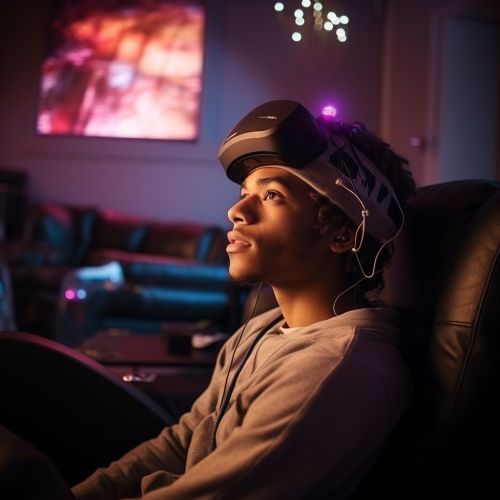Neurocinematics
Introduction
Neurocinematics is a field of study that combines neuroscience and film studies to explore the impact of film on the human brain. This interdisciplinary field uses tools such as functional magnetic resonance imaging (fMRI) and electroencephalography (EEG) to measure brain activity while subjects watch films. The aim is to understand how different elements of film, such as narrative, cinematography, and sound, affect the viewer's brain and, consequently, their emotional and cognitive responses.


History
The term "neurocinematics" was coined by Uri Hasson, a professor of psychology and neuroscience at Princeton University, in a 2008 study published in the journal Projections. Hasson and his colleagues used fMRI to measure brain activity in subjects while they watched a variety of film clips. They found that certain films produced highly similar patterns of brain activity across different viewers, a phenomenon they termed "inter-subject correlation" (ISC).
Methodology
Neurocinematic studies typically involve participants watching films while their brain activity is monitored using neuroimaging techniques. The most commonly used techniques are fMRI, which measures changes in blood flow to different parts of the brain, and EEG, which measures electrical activity in the brain.
The films used in these studies can range from short clips to full-length movies, and can include a variety of genres and styles. The choice of film can have a significant impact on the results of the study, as different films can elicit different cognitive and emotional responses.
Findings
Neurocinematic research has yielded a number of interesting findings. For example, Hasson's 2008 study found that action films tend to produce the highest levels of ISC, suggesting that these films are particularly effective at capturing and holding the viewer's attention. Other studies have found that films with complex narratives or emotional content can elicit strong responses in areas of the brain associated with empathy and emotional processing.
One of the most significant findings in neurocinematics is the discovery of the "default mode network" (DMN), a network of brain regions that is active when the mind is at rest and not focused on the outside world. Studies have found that the DMN is deactivated when viewers watch engaging films, suggesting that these films are able to fully capture the viewer's attention and prevent mind-wandering.
Applications
The findings of neurocinematics have potential applications in a variety of fields. In film studies, for example, neurocinematic research can provide insights into how different filmmaking techniques affect viewers' emotional and cognitive responses. This could potentially inform the creation of more engaging and emotionally impactful films.
In neuroscience, neurocinematics can provide a valuable tool for studying the human brain. By observing how the brain responds to complex stimuli like films, researchers can gain insights into how different brain regions interact and how cognitive processes like attention and emotion are regulated.
In the field of advertising, neurocinematics could be used to create more effective advertisements by identifying the elements of film that most effectively capture viewers' attention and elicit emotional responses.
Criticisms
Despite its potential, neurocinematics has also been subject to criticism. Some critics argue that the field is too reductionist, oversimplifying the complex processes of film viewing to mere brain activity. Others question the validity of using neuroimaging techniques to study subjective experiences like film viewing, arguing that these techniques can only provide a limited and potentially misleading picture of these experiences.
Future Directions
Despite these criticisms, neurocinematics is a rapidly growing field with much potential for future research. Future studies could explore a wider range of films and genres, and could also incorporate other measures of viewer response, such as eye tracking or physiological measures like heart rate and skin conductance. Additionally, advances in neuroimaging technology could allow for more detailed and accurate measurements of brain activity, opening up new possibilities for research.
